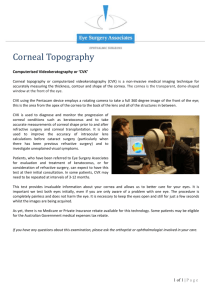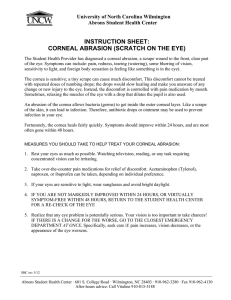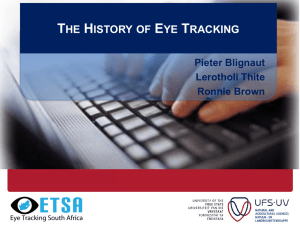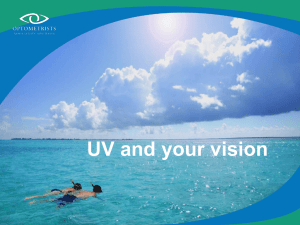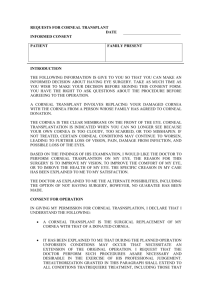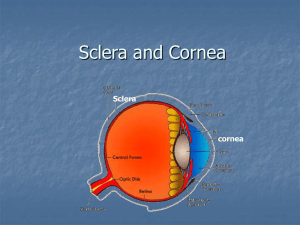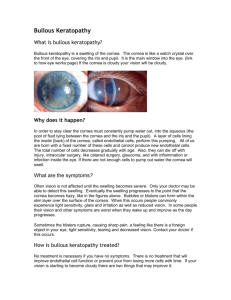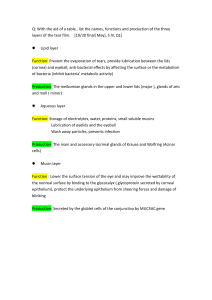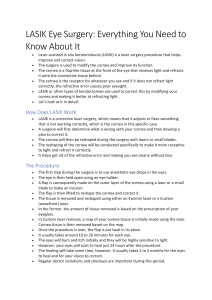FACT SHEET - Maehara Eye Surgery & Laser
advertisement
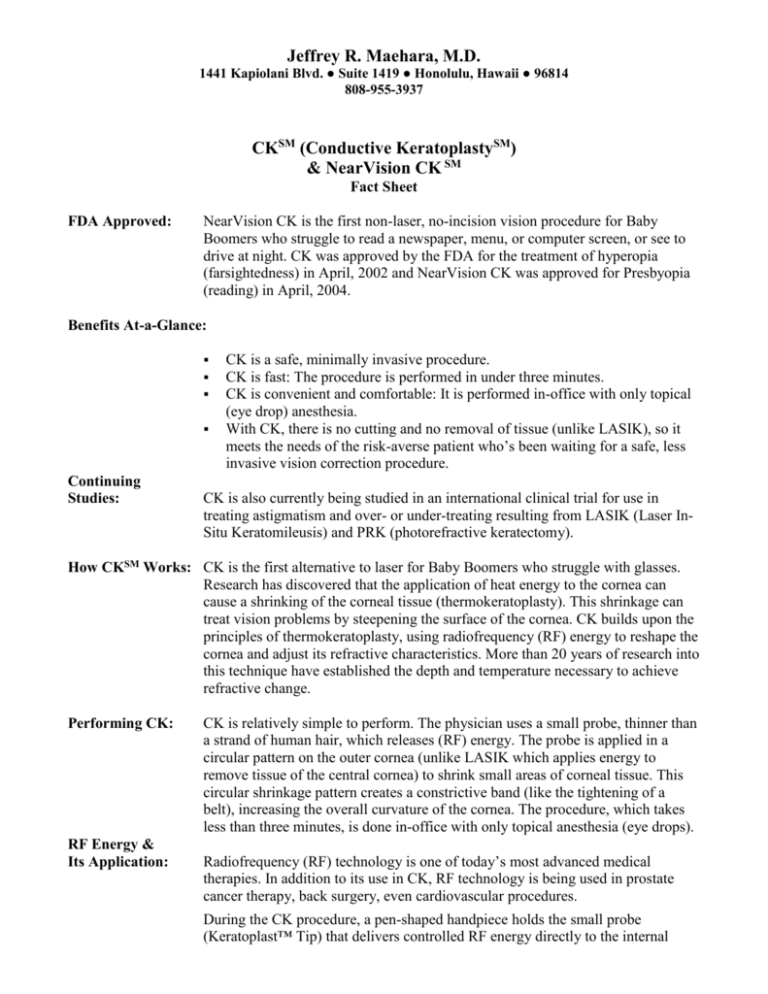
Jeffrey R. Maehara, M.D. 1441 Kapiolani Blvd. ● Suite 1419 ● Honolulu, Hawaii ● 96814 808-955-3937 CKSM (Conductive KeratoplastySM) & NearVision CK SM Fact Sheet FDA Approved: NearVision CK is the first non-laser, no-incision vision procedure for Baby Boomers who struggle to read a newspaper, menu, or computer screen, or see to drive at night. CK was approved by the FDA for the treatment of hyperopia (farsightedness) in April, 2002 and NearVision CK was approved for Presbyopia (reading) in April, 2004. Benefits At-a-Glance: Continuing Studies: CK is a safe, minimally invasive procedure. CK is fast: The procedure is performed in under three minutes. CK is convenient and comfortable: It is performed in-office with only topical (eye drop) anesthesia. With CK, there is no cutting and no removal of tissue (unlike LASIK), so it meets the needs of the risk-averse patient who’s been waiting for a safe, less invasive vision correction procedure. CK is also currently being studied in an international clinical trial for use in treating astigmatism and over- or under-treating resulting from LASIK (Laser InSitu Keratomileusis) and PRK (photorefractive keratectomy). How CKSM Works: CK is the first alternative to laser for Baby Boomers who struggle with glasses. Research has discovered that the application of heat energy to the cornea can cause a shrinking of the corneal tissue (thermokeratoplasty). This shrinkage can treat vision problems by steepening the surface of the cornea. CK builds upon the principles of thermokeratoplasty, using radiofrequency (RF) energy to reshape the cornea and adjust its refractive characteristics. More than 20 years of research into this technique have established the depth and temperature necessary to achieve refractive change. Performing CK: RF Energy & Its Application: CK is relatively simple to perform. The physician uses a small probe, thinner than a strand of human hair, which releases (RF) energy. The probe is applied in a circular pattern on the outer cornea (unlike LASIK which applies energy to remove tissue of the central cornea) to shrink small areas of corneal tissue. This circular shrinkage pattern creates a constrictive band (like the tightening of a belt), increasing the overall curvature of the cornea. The procedure, which takes less than three minutes, is done in-office with only topical anesthesia (eye drops). Radiofrequency (RF) technology is one of today’s most advanced medical therapies. In addition to its use in CK, RF technology is being used in prostate cancer therapy, back surgery, even cardiovascular procedures. During the CK procedure, a pen-shaped handpiece holds the small probe (Keratoplast™ Tip) that delivers controlled RF energy directly to the internal Dr. Maehara CK Fact Sheet Page 2 of 2 corneal tissue. The tip serves as an RF antenna while the speculum holding the eye open serves as the return path. RF Energy & Its Application (cont): By applying RF energy to the corneal tissue, Ohm's law (V = I R) defines a consistent relationship that determines the heat generated. The voltage (V) determines the electrical field strength within the tissue while the current (I) is defined by the treatment parameters. Impedance is a characteristic of tissue. The characteristics of the energy (e.g., current, waveform, frequency, rep rate, and crest factor) and the collagen tissue's consistent conductive properties make it possible for CK to achieve a reproducible, optimal tissue temperature to bring about the localized shrinkage of the collagen fibers. Depth of Treatment & Effects: Several studies have concluded that the depth of collagen shrinkage determines the degree of permanency of the corneal treatment. Because of the intrastromal delivery of RF energy, CK produces collagen shrinkage that encompasses 80% of the corneal thickness. CK From the Patient’s Perspective: Before CK: Once the ophthalmologist has determined the patient to be a candidate for CK, the patient’s cornea will be mapped with a computer to evaluate its curvature (refractive characteristics). During CK: After applying drops to numb the eye and ensure the procedure is painless, the doctor imprints a treatment pattern on the cornea using rinse-away dye. The pattern guides the doctor’s treatment; each point represents a place where radiofrequency (RF) energy will be applied. Once the cornea is marked, the doctor uses a small probe, called a Keratoplast™ Tip, to apply the energy in a circular pattern to reshape the cornea. The most common sensation that patients experience is a feeling of pressure on the eye. After CK: The doctor will apply antibiotic drops that the patient will continue using for three days, as per labeling. The patient may need to wear dark glasses after the CK treatment and use artificial tears for up to one week. As with other vision procedures, there may be some mild discomfort and light sensitivity for a few days, and many patients experience a foreign-object sensation or a slight "scratchiness" in the eye. This usually subsides within 24 hours of the procedure, but light sensitivity may last one or more weeks. CK Patient Profile: Following are the basic criteria in order to be considered a candidate for CK: Age 40 and over No drastic changes in vision or eyeglass prescription within the past year No eye conditions such as glaucoma, severe dryness, keratoconus, herpes of the eye, aggressive keloid formation or corneal dystrophy No physical conditions such as diabetes, pregnancy or nursing, and vascular or autoimmune diseases Those interested in CK should seek the recommendation of an eye surgeon. FD02-005

